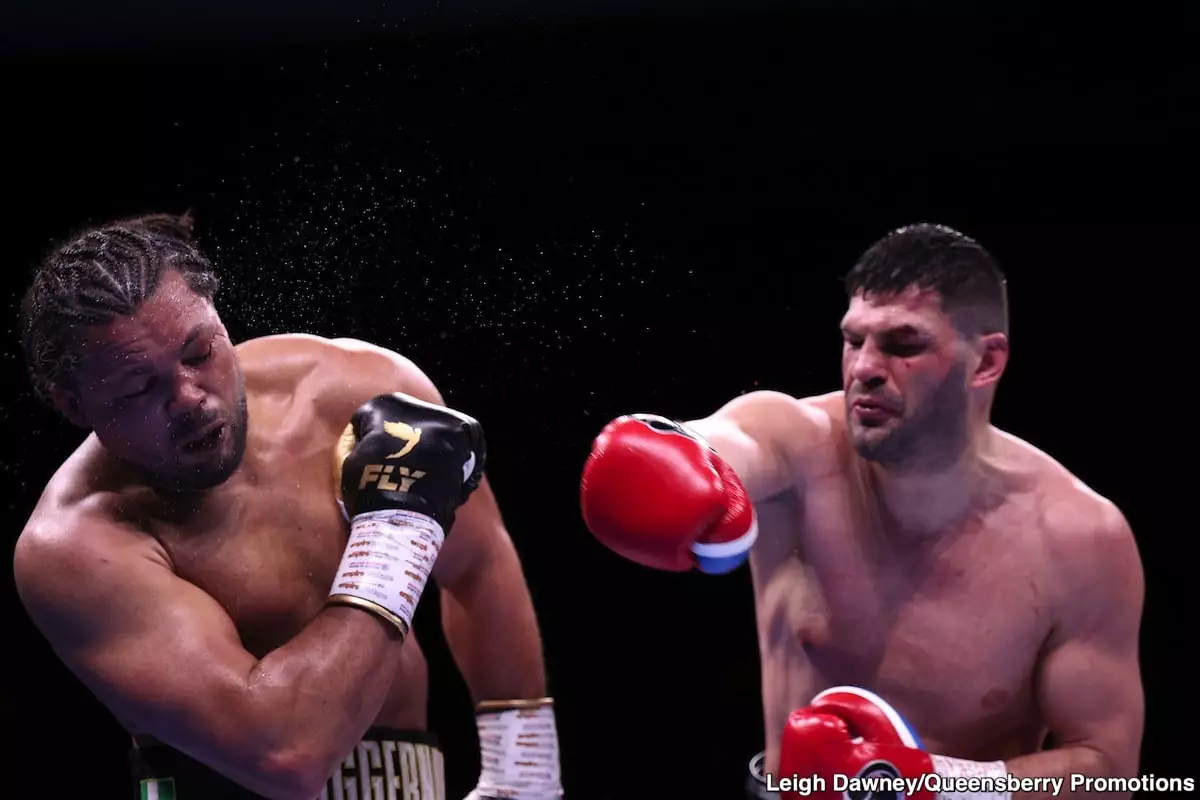This Saturday in Riyadh, the heavyweight division is poised for a compelling showdown that could reshape perceptions and trajectories. Foremost among the bouts is Filip Hrgovic’s fight against David Adeleye, a match that embodies the burgeoning strength of a new generation. However, the real intrigue lies outside the ring, where the highly anticipated main event pits the young, promising Moses Itauma against seasoned veteran Dillian Whyte. The unfolding narrative symbolically captures the clash between raw potential and gritty experience, a rivalry that promises excitement and unpredictability.
While Hrgovic prepares meticulously for his own matchup, his insights into the Itauma-Whyte clash reveal a nuanced understanding of the sport’s dynamics. Hrgovic’s candid assessment suggests that Whyte, at 37, remains an unpredictable wildcard. Despite the aging process and reports of a vigorous training camp, questions linger about his current physical and mental readiness. Yet, Hrgovic emphasizes one critical trait—resilience. “He’s always tough,” he notes, acknowledging that strength alone can sometimes tilt the scales, especially if Whyte can survive the initial onslaught and extend the fight into deeper rounds. In boxing, experience often manifests as a mental fortress, and Whyte’s resilience might just be his ticket to upsetting the odds.
Theoretically, Itauma’s youth and power make him the favorite. His own admission of needing rounds and development underpins the notion that he remains an unfinished product. Nonetheless, his punch power and precision throw him into the conversation as a future heavyweight force. But there’s an inherent risk: if Whyte can weather the early storm, he might turn the fight into a test of endurance and grit. This strategic aspect transforms the bout into a chess match—a contest of stamina, willpower, and tactical execution. The potential for an upset hinges largely on whether Whyte can adapt and impose his style upon a faster, more aggressive opponent.
Hrgovic’s perspective adds an extra layer of intrigue. He points out that Itauma’s heavy-handed approach could be a double-edged sword. If the young fighter cannot sustain his power or if his chin is genuinely tested, the fight’s outcome might swing unexpectedly. The heavyweight division, historically unpredictable, thrives on such variables. It’s a reminder that even the most promising prospects remain vulnerable and that experience often triumphs over raw talent when the stakes are highest.
In essence, this weekend’s boxing card is not merely about individual bouts but about the ongoing evolution of the heavyweight landscape. It’s a scenario where youth and power collide with seasoned resilience and strategic mastery. The fights have the potential to redefine careers, elevate new stars, and reinforce the unpredictable nature of boxing—a sport where every punch, every decision, and every moment can turn the tide. As fans and critics alike gaze upon these fighters, one fact is undeniable: the heavyweight division continues to evolve, fueled by hopes, fears, and the relentless pursuit of greatness.


Leave a Reply